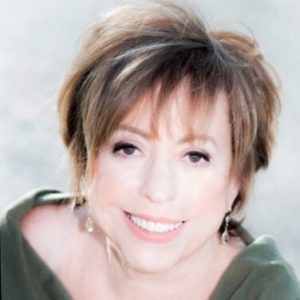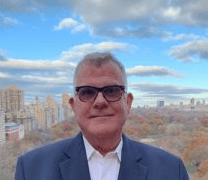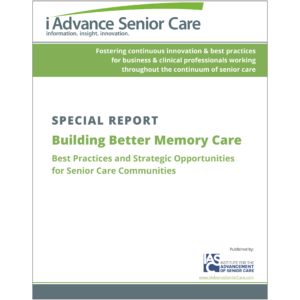Pentecostal moments in long-term care
Can religion add quality to life in advanced age? Can it do so when dementia sets in?
The search for an answer brought me to the Pavilion, a large nursing home located in an older Chicago suburb that has been home to successive generations of immigrants from East Europe. Many older members among them are residents at the Pavilion.
A Jewish businessman bought a nondescript building, gave it a new face and turned it into a skilled nursing care facility. He ran it smartly as a successful business and showed sufficient concern for residents that the Pavilion never received a citation for a grave deficiency.
He executed a master stroke in the third year. He recruited as his director of nursing Jean Marie, a gregarious, freshly minted MSN with a sunny Irish disposition. She breezed in as spring rain to a parched land. She befriended residents, staff and family as programs, protocols and practices sprouted. A truly person-centered culture took root at the Pavilion.
RELIGIOUS AND CULTURAL ANCHORS
Many residents at the Pavilion were already linked in a common East European ethnic culture. Jean Marie affirmed their cultural identity; she boosted their self worth, pride and confidence by celebrating ethnic traditions, customs and festivals. “Still, I was humbled,” she admitted, “to discover a blind spot in our approach. Pavilion had not fully realized that religion was more than an institution; its spirit suffused every aspect of that ethnic culture.”
She went on to tell me this remarkable story:
“Catholicism courses as the life blood in the cultural veins of the East European immigrant. All life’s milestones and transitions are marked with Catholic symbolism and tradition. Yet, not a single Catholic priest had stepped inside the Pavilion in two years, nor was a single Catholic mass celebrated within the Pavilion walls. Instead, a woman minister in secular clothes dropped by occasionally and conducted a non-denominational service.
“So I took the lead. Working together we planned a religious event that would resonate with the residents’ experience of their younger years. We recruited a retired priest. We prepared an altar, complete with fresh flowers, beeswax candles and the wafting aroma of burning incence.
“Ahead of the appointed hour, CNAs wheeled in the frail to join the other assembled residents, families and staff. The make-do choir set the tone; with genuine feeling and in shaky pitch, they sang hallowed Catholic hymns and chanted familiar Gregorian verses. The priest, who looked like a pious Santa Claus, donned Mass vestments that were of a bygone pre-Vatican II age. He processed to the altar, genuflected, faced the altar with his back to the congregation, and conducted the liturgy starting in sonorous Latin. The Spirit, it seemed, was about to descend.
“A hush fell over the faithful. All turned toward Emma. At a ripe age of 93, lovable Emma was severely demented and for months had spoken only gibberish. The congregation was aghast as the miracle unfolded before their eyes.
“Emma shot out of her wheelchair. She stood ramrod erect, she thrust her hands toward heaven, and in loud, crisp and clear words accompanied the priest in reciting the entire Our Father, flawlessly and with not a syllable out of synch.”
A PIVOTAL CENTER OF MEANINGFUL ACTIVITY
A Pentecostal moment like this hints at the promise that religion holds when you creatively graft it on to resident protocol. I found an edifying illustration in a nursing home on Chicago’s north side. It served 90 Jewish elderly. Its administrator, an import from Israel, had converted a prominent section of the building into a functional synagogue. I marveled at the wide impact it made on the residents. The synagogue added a new dimension to nursing home life; it became the pivotal center for residents to meet, to pray, to study, to plan, to manage or for camaraderie.
“Most of these oldsters were not really religious in life,” the administrator told me. “But now in their twilight years having felt intimations of mortality, they seek answers to the universal human questions about life’s origins, end, purpose and meaning. Religion and ethnicity readily provide them the roadmaps.”
SECURITY AND COMFORT IN LIFE AND DEATH
The Little Sisters of the Poor, located northwest of Chicago, took a less studied and more spontaneous route. They simply attuned the rhythm of daily nursing home life to the Catholic heritage. This order of nuns originated in France; they serve the poor elderly on five continents. In their Chicago area nursing home they have created a markedly Catholic ambience.
At every turn, religious icons, statues, images and signs echo the symbolism and metaphors that, in yesteryears, the residents reverentially imbibed in their Catholic home, school and parish. The feasts, fasts, rituals and obligations of the Catholic calendar affect their daily routine and diet. The chapel takes the pride of place in the nursing home. It is the anchor and the rallying post for the community, a quiet place for private prayer and meditation. Three priests who live there as residents take turn celebrating daily Mass. On Sundays the chapelfills to capacity for a concelebrated Mass. Families who join in the Eucharistic celebration accompany or wheel-in their relative. Some do so daily. As in life, so in death religion sanctifies the final hours with sacred oils and ritual. You breathe your last surrounded by family and caregivers and comforted by the fading sound of hushed Hail Marys.
Such ethnographic evidence, abundantly found in long-term care, and not only in Chicago, speaks of the salutary contribution religion makes in advanced age. It has stirred researchers to drill down the issue to its physiological level. What neurological effects do religion and spirituality trigger in the human brain in its normal or diseased state?
My allotted space requires that I postpone a discussion on this subject to future columns. But as we close, in keeping with our purpose, I invite you to join in a collective salute to all caregivers who use religion and spirituality to enhance the life of our elders.
V. Tellis-Nayak, PhD, a medical sociologist, is a researcher at My InnerView. He has been a university professor, has conducted research in the United States and abroad, and has authored books and articles. He can be reached at vtellisn@gmail.com.
I Advance Senior Care is the industry-leading source for practical, in-depth, business-building, and resident care information for owners, executives, administrators, and directors of nursing at assisted living communities, skilled nursing facilities, post-acute facilities, and continuing care retirement communities. The I Advance Senior Care editorial team and industry experts provide market analysis, strategic direction, policy commentary, clinical best-practices, business management, and technology breakthroughs.
I Advance Senior Care is part of the Institute for the Advancement of Senior Care and published by Plain-English Health Care.
Related Articles
Topics: Activities , Articles , Executive Leadership











